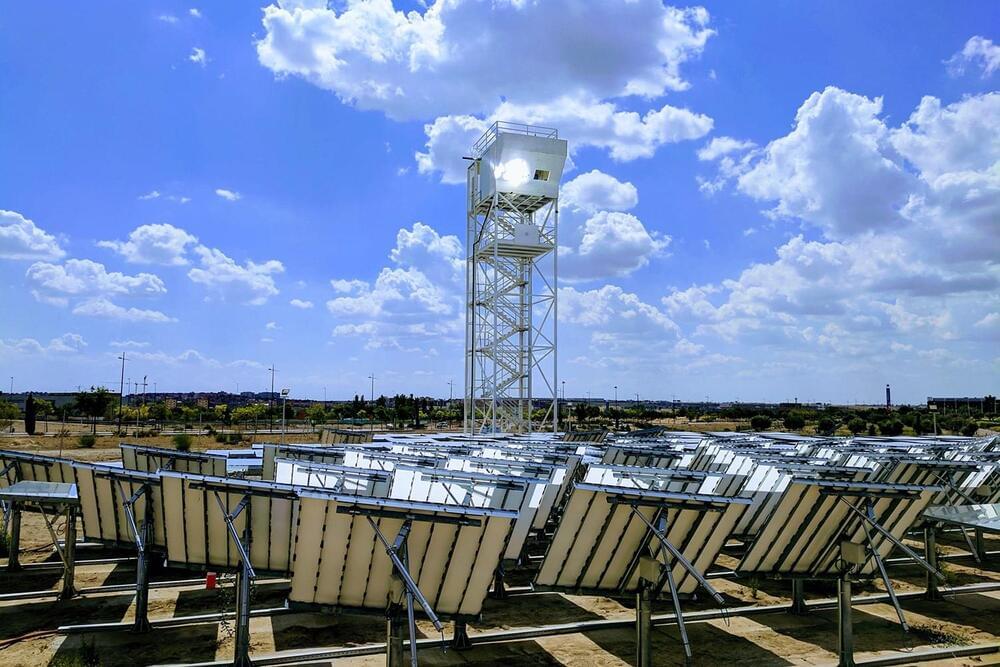Now, an international team of researchers has developed a tower that uses solar energy to produce a synthetic alternative to fossil-derived fuels like kerosene and diesel. The fuel production system uses water, carbon dioxide (CO2), and sunlight to produce aviation fuel. The team has implemented the system in the field, and the design could help the aviation industry become carbon neutral.
The solar-made kerosene is fully compatible with the existing aviation infrastructure for fuel storage, distribution, and end use in jet engines. It can also be blended with fossil-derived kerosene, says Aldo Steinfeld, a professor from ETH Zurich and the corresponding author of the paper.
The solar fuel production plant consists of 169 sun-tracking reflective panels that redirect and concentrate solar radiation into a solar reactor mounted on top of a tower. The concentrated solar energy then drives oxidation-reduction (redox) reaction cycles in the solar reactor, which contains a reticulated porous ceramic structure made of ceria. The ceria – which is not consumed but can be used over and over – convert water and CO2 injected into the reactor into syngas, a tailored mixture of hydrogen and carbon monoxide. Subsequently, syngas is sent into a gas-to-liquid converter, where it is finally processed into liquid hydrocarbon fuels that include kerosene and diesel.









Comments are closed.